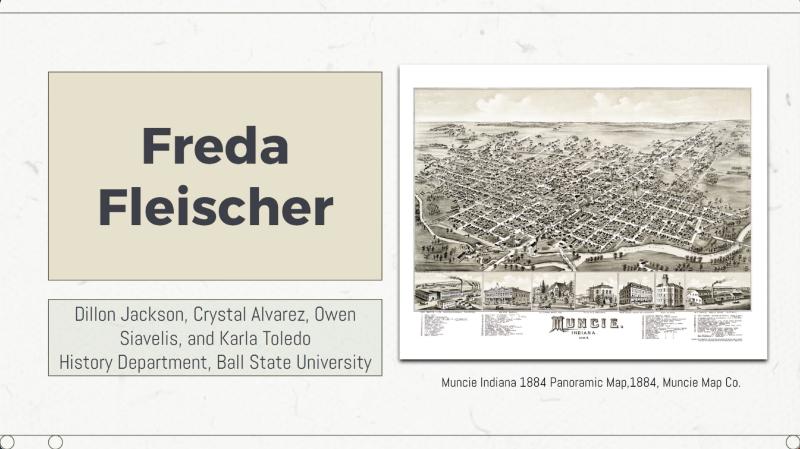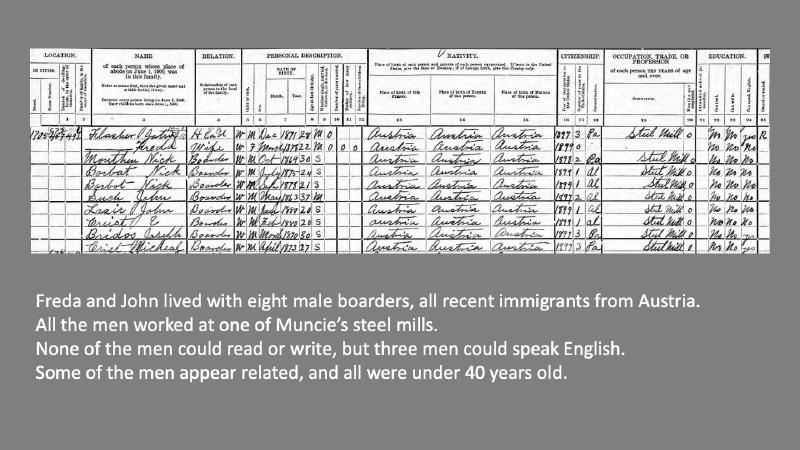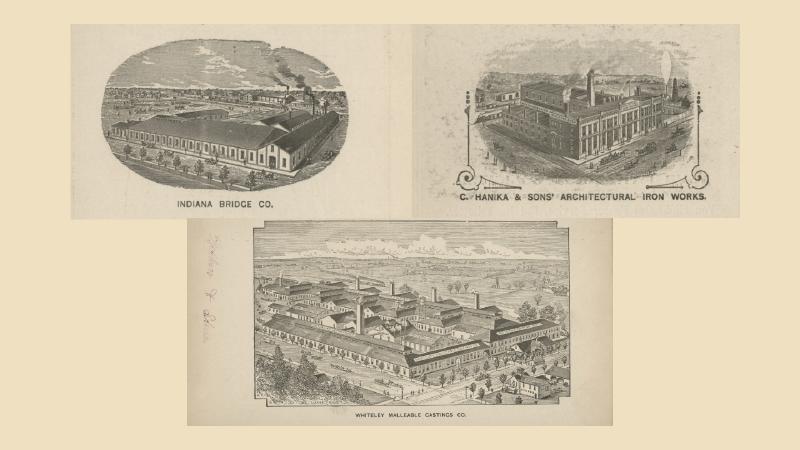Freda Fleischer
Freda Fleischer immigrated from Austria as a twenty-something woman. She arrived in Muncie in 1900 with her new husband, John. Although they lived in Muncie for only two years, her life reflects the city's core need for industrial workers, who came from outside the city.
This biography video was researched and created by Crystal Alvarez, Dillon Jackson, Owen Siavelis, and Karla Toledo.
As the 1900 census (below) shows, Freda spoke little to no English when she arrived in Muncie. This was not unusual in her household of ten Austrian immigrants, and it does not seem to have limited the work prospects of male imigrants. None of the men reported being out of work in the previous twelve months.
In 1900, Indiana's foreign-born Whites made up 5.6% of the total state population. Although, it was down slightly from 1890, another 14.5% of the native-born White population had foreign parents. This suggests that at the turn of the new century, Indiana still attracted a large number of immigrants, in addition to native-born migrants from other states.
Freda was not the only immigrant living on South Liberty Street. Two doors down lived Thomas Brady, another steel mill worker from Ireland. Herman Clinkey on Nineth Street came from Germany and worked at the iron mill. On West Tenth Street, the machinist James Summarton had immigrated from England. Although they all spoke English, they had been in the United States for eighteen to twenty years and worked in English-only environments.
As a woman who worked in the home and likely spent most of her time in its vicinity, it surely offered Freda challenges. Meda (or Mattea) Mascari, an Italian immigrant, lived a couple blocks away on South High Street. Meda and her husband Thomas had arrived in the United States six years earlier. In 1900 the couple spoke English, but neither could read or write. Thomas' occupation of fruit dealer likely depended on his wife's cooperation. As Muncie had few Italian speakers, learning English would have been a top priority.
Although Freda's occupation in the 1900 census report is blank (like Meda's), she surely acted as a boarding-house keeper, cooking and cleaning for the couple's eight boarders. This was a common role for working-class women, who often took in one or two boarders to fill empty bedrooms. The house next door on South Liberty Street also had two boarders: Philip Hershey, a day laborer, and John Malone, a silver plater.
Freda's cooking and cleaning kept the household running. Her work fed and sheltered nine of Muncie's steel mill workers who spent their days in factories like those proudly depicted in city directories (below). Through them, Freda contributed to Muncie's wealth and industrial production.
In 1910 Freda spoke to the census enumerator in English. By that time, she and John had moved to Ohio. In 1903 the couple moved to Cleveland, a city of over 560,000 people. In 1910, over 195,000 people or 35% of the city's White population was foreign-born. The largest sub-group (of 42,059 people) had emigrated from Austria. In Cleveland Freda's ability to speak both German and English would have been useful.
Although she lived at a time of great pressure to assimilate and become "American," Freda lived in places that attracted workers from across the country and the globe. Without their labor, the United States would have been poorer and weaker.
To learn how this team navigated the twists and turns of documenting immigration and industrialization, watch the methodology video below.
This methodology video was created by Crystal Alvarez, Dillon Jackson, Owen Siavelis, and Karla Toledo.
To meet another woman who lived as a second-language learner, click on Julia Sparr Coffin. Her missionary and pharmacist work took her to Fuzhou, China in the late nineteenth century.



